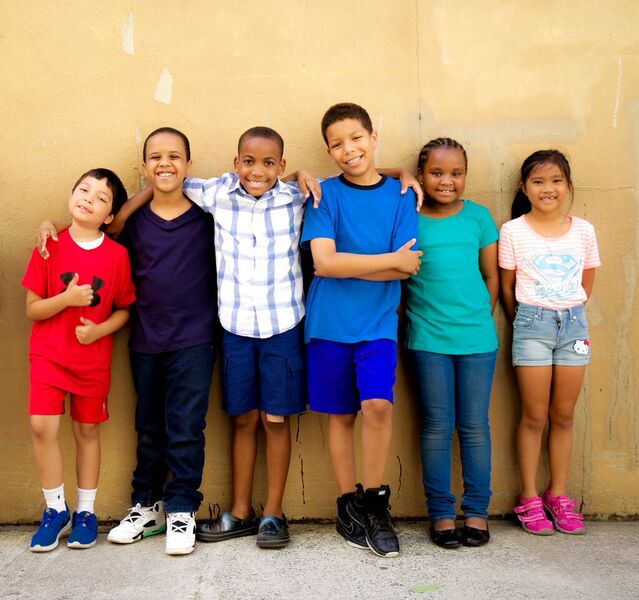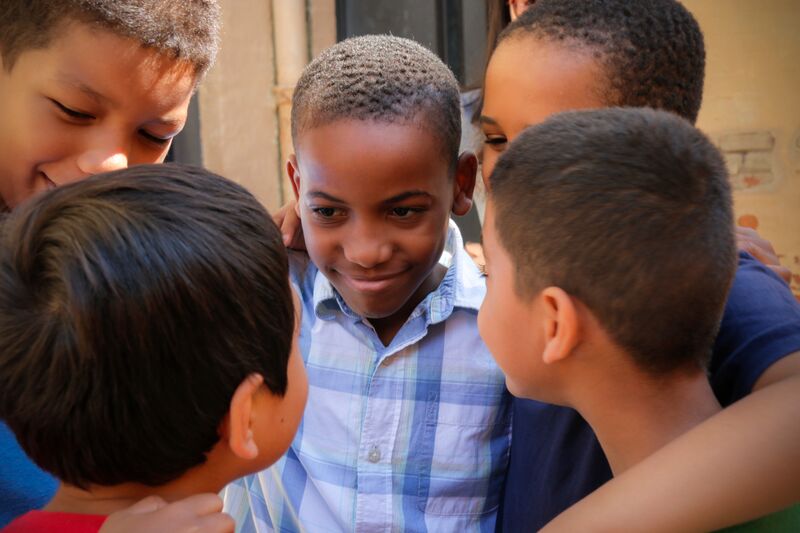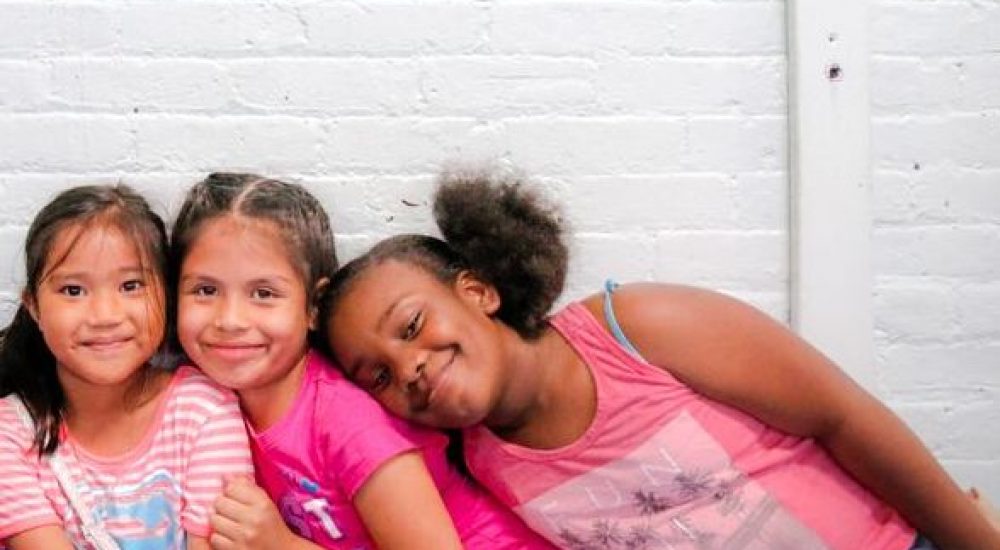Designing welcoming environments for children and families has never been more important.
Let’s look at some statistics and then talk action!
- Recent research shows that high school students report feeling “tired, stressed and bored” during the school day.
- 28% of U.S. students in grades 6–12 have experienced bullying and children with disabilities experience an increased risk.
- During the 2013-2014 school year, more than 1.3 million homeless children and youth were enrolled in public schools.
- 16.2 million children live in households that lack the means for enough nutritious food on a regular basis.
- The linkage between poverty and social isolation make achieving economic success a challenge for many American families.
When reading these statistics, it’s easy to feel discouraged. But – AFTERSCHOOL IS POWERFUL.
Imagine if we energize the 10.2 million children attending afterschool programs to feel a greater sense of connectedness and responsibility for each other and their communities.
Inspired by a recent visit I made to the National Center on Health, Physical Activity and Disability (NCHPAD), below are four activities to try this month to foster inclusive and welcoming environments. I’ve also intentionally blended these activities with the National AfterSchool Association (NAA) Standards for Healthy Eating and Physical Activity because a healthy afterschool site should always be an inclusive site.

1. Lead a Site Walk-through
Gather staff and students to lead an inclusion-focused walk-through of your afterschool site. If you operate on school grounds, invite school administration to join you. If you’re a recreation agency, invite someone from your city council to join you. Before a child or family member even walks through your front door, what small changes can you make to ensure they feel welcome?
What opportunities will you uncover on your walk? Here are some ideas:
One new solution might be to create a fun and active trail made with Alliance for a Healthier Generation task cards leading up to your front door. Print, laminate and post activities using paint sticks. It’ll add color and movement to your site while making a statement that something fresh and engaging happens inside!
Why not ask teens to design an “all about me” welcome bulletin board that features site staff and their favorite physical activities or hobbies. Integrate this activity into new volunteer or staff on-boarding to reinforce that your program prioritizes healthy role-modeling.
Keep the creativity flowing and help new students feel included by providing clear and vibrant signage. Decorate water fountains, hang encouraging stairwell signs and make it the norm to dance from point A to point B. In a challenging world, filling our afterschool programs with art, music and movement can provide a much needed oasis for children who may not otherwise have it.
A site walk-through gives children the opportunity to express their creativity and take ownership of the physical space of their afterschool site where they can find places to “absorb, act and show”. Invite in-school staff to collaborate with afterschool staff and work together, especially if you share space. Consider putting a shared use agreement in place to make your efforts more sustainable.
Invite maintenance staff to participate so they understand your program goals. Something as simple as requesting light bulbs to be replaced can make it easier for children with disabilities, brighten up dark corners and encourage stairwell usage. Why not partner with your local creative community to paint a mural with positive and healthy messages? Not sure how to get plugged in? Check out a Creative Mornings event. A service-learning grant could help make it happen and a local art store might donate supplies and talent.
Combine intentionality and spring-cleaning and who knows what inspired materials you’ll find in your supply closet!
2. Make Daily Cooperative Physical Activity the Norm
It doesn’t matter if your program is focused on STEM or homework help, starting your program day with an inclusive brain booster can help children get active, clear their mind and foster connectedness. Make rainy days cooperative days even if they catch you by surprise. Create your own collection of favorite energizers so it’s easier for children to help staff select activities that meet best practices.
Make this practice sustainable by adopting a wellness policy that ensures all program time begins with physical activity. Add cooperative physical activities to staff meetings and family events too for consistent messaging and role-modeling.
Avoid games with elimination elements that might target children who are new or different. Never run out of ideas by hosting your own do-it-yourself brain booster activity. Commit to never playing games like dodgeball – ever.
Daily cooperative activities give children an opportunity to learn, practice and develop a life-long love of movement. Cooperative games also make it easier for children to share in leadership.
3. Build Community through Healthy Snacks and Meals
If you serve afterschool snacks, meals or summer meals, promote dialogue and discussion through intentional conversations and activities. Structured mealtimes prevent small cliques from forming. Pay attention to needs of children with physical disabilities who many need accommodations. As you plan for summer meals, consider how new partners can spread the word, such as healthcare providers, the faith community and social service agencies who can help you reach a broader audience.
Let shared food experiences show youth how to identify commonalities with their peers and community members. Taste tests and potlucks at family events create space for families to get to know each other, share culture and traditions of cooking, meal times or even food preservation.
4. Build a Movement through Partnerships with Purpose
From maintenance staff willing to replace your light bulb to a police officer who likes to Zumba, creating healthy inclusive communities requires all of us. Learning how to work together can be the most challenging part. Begin staff meetings with intentional icebreakers to help staff connect on a personal and professional level.
 Identify partnerships and guest speakers that reflect your student’s interests and backgrounds, but find opportunities to introduce your students to new experiences. Give yourself permission to not know all of the answers. If you’re not sure how to adapt a brain booster to be inclusive, ask a local disability focused organization, special education or PE teacher or e-mail NCHPAD. If you’re going on a field trip or having a guest speaker, take time to educate the partner organization on the students and the families you serve.
Identify partnerships and guest speakers that reflect your student’s interests and backgrounds, but find opportunities to introduce your students to new experiences. Give yourself permission to not know all of the answers. If you’re not sure how to adapt a brain booster to be inclusive, ask a local disability focused organization, special education or PE teacher or e-mail NCHPAD. If you’re going on a field trip or having a guest speaker, take time to educate the partner organization on the students and the families you serve.
Ensure your social media reflects families that you want to recruit into your program and depicts an inclusive environment.
Imagine the world we could create if we harnessed the power of the 10.2 million children
who attend afterschool programs. That potential grows if we involve passionate staff, unconventional partners and extended families. We can accomplish a lot in afterschool, from health and wellness to STEM, but our impact will only be as strong as our ability to be inclusive and welcoming.
For breakfast I had a coffee and two clementines.
Author Profile: @danielh

Pingback: 7 Healthy Makeover Ideas for Your Office & Breakroom - BOOST Cafe